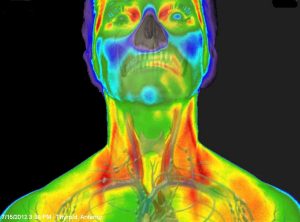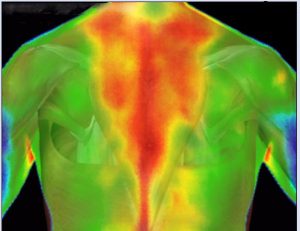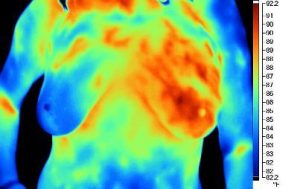Here you’ll find a number of informative thermography research studies on the subject of medical Infrared in the context of a number of clinical applications including breast oncology, Peripheral Neuropathy, Cerebral Vascular Disease, and Rheumatoid Disease.
Harvard Thermography Research Study 2012
AMA Council Report On Thermography Research in Neurological and Musculoskeletal Disease
Infrared Imaging In Breast Cancer – Thermography Research Study
We studied angiogenesis by infrared imaging camera in a large number of symptomatic and asymptomatic patients, in 148 non-palpable cancers and in 20 inflammatory breast carcinomas. Published: 1997 –Review full report
A Comparative Review of Thermography as a Breast Screening Technique
In this review, each of the breast screening tools and their associated limitations are discussed, with a focus on to thermography. Published: Integrative Cancer Therapies 2009 –Review full report
Biomedical Wellness Standoff Screening by Unsupervised Learning – Thermography Research Review
Biomedical Wellness (BMW) surveillance system may become indispensable in public health. – Review full report
Efficacy of Computerized Infrared Imaging Analysis to Evaluate Mammographically Suspicious Lesions
The purpose of this clinical trial was to determine the efficacy of a dynamic computerized Infrared imaging system for distinguishing between benign and malignant lesions in patients undergoing biopsy on the basis of X-Ray Mammographic findings. Published: American Journal of Radiology 2003 – Review full report
Effectiveness of a non-invasive Digital Infrared Thermal Imaging System in the detection of Breast Cancer
Infrared Mammography has resurfaced in this era of modernized computer technology. Published: The American Journal of Surgery Volume 196, Issue 4, Pages 523-526 2008 – Review full report.
Stark. A., Way, S. The Screening of Well Women for the Early Detection of Breast Cancer Using Clinical Examination with Thermography and Mammography – Cancer 33: 1671-1679, 1974
Researchers screened 4,621 asymptomatic women, 35% whom were under age 35 years old and detected 24 cancers (7.6 per 1000) with a sensitivity and specificity of 98.3% and 93.5% respectively
R. Hamm, K. Hughes, L. Esserman, S. Rust, K.Callahan, Efficacy of Computerized Infrared Imaging Analysis to Evaluate Mammographically Suspicious Lesions. AJR:180, January 2003
Compared results of Infrared imaging prior to biopsy. The researchers determined that Thermography offers a safe, noninvasive procedure that would be valuable as an adjunct to mammography in determining whether a lesion is benign or malignant with a 99% predictive value.
Gros, C, Gautherie, M. Breast Thermography and Cancer Risk Prediction. Cancer 45:51-56 1980
From a patient base of 58,000 women screened with thermography, researchers followed 1,527 patients with initially healthy breasts and abnormal thermograms for 12 years. Of this group, 40% developed malignancies within 5 years. The study concluded that “an abnormal thermogram is the single most important marker of high risk for the future development of breast cancer”
Spitalier, H., Giraud, D. et al. Does Infrared Thermography Truly Have a Role in Present-Day Breast Cancer Management? Biomedical Thermology pp.269-278, 1982
Spitalier and associates screened 61,000 women using thermography over a 10 year period. The false negative and positive rate was found to be 11% (89% sensitivity and specificity). 91% of the nonpalpable cancers (T0 rating) were detected by thermography. Of all the patients with cancer, thermography alone was the first alarm in 60% of cases. The authors noted “in patients having no clinical or radiographic suspicion of malignancy, a persistent abnormal breast thermogram represents the highest known risk factor for the future development of breast cancer”
Jiang LJ, Ng FY et al A Perspective on Medical Infrared Imaging. J Med Technol 2005 Nov-Dec;29(6):257-67
Since the early days of thermography in the 1950s, image processing techniques, sensitivity of thermal sensors and spatial resolution have progressed greatly, holding out fresh promise for infrared (IR) imaging techniques. Applications in civil, industrial and healthcare fields are thus reaching a high level of technical performance. In many diseases there are variations in blood flow, and these in turn affect the skin temperature. IR imaging offers a useful and non-invasive approach to the diagnosis and treatment (as therapeutic aids) of many disorders, in particular in the areas of rheumatology, dermatology, orthopedics and circulatory abnormalities. This paper reviews many usages (and hence the limitations) of thermography in biomedical fields.



